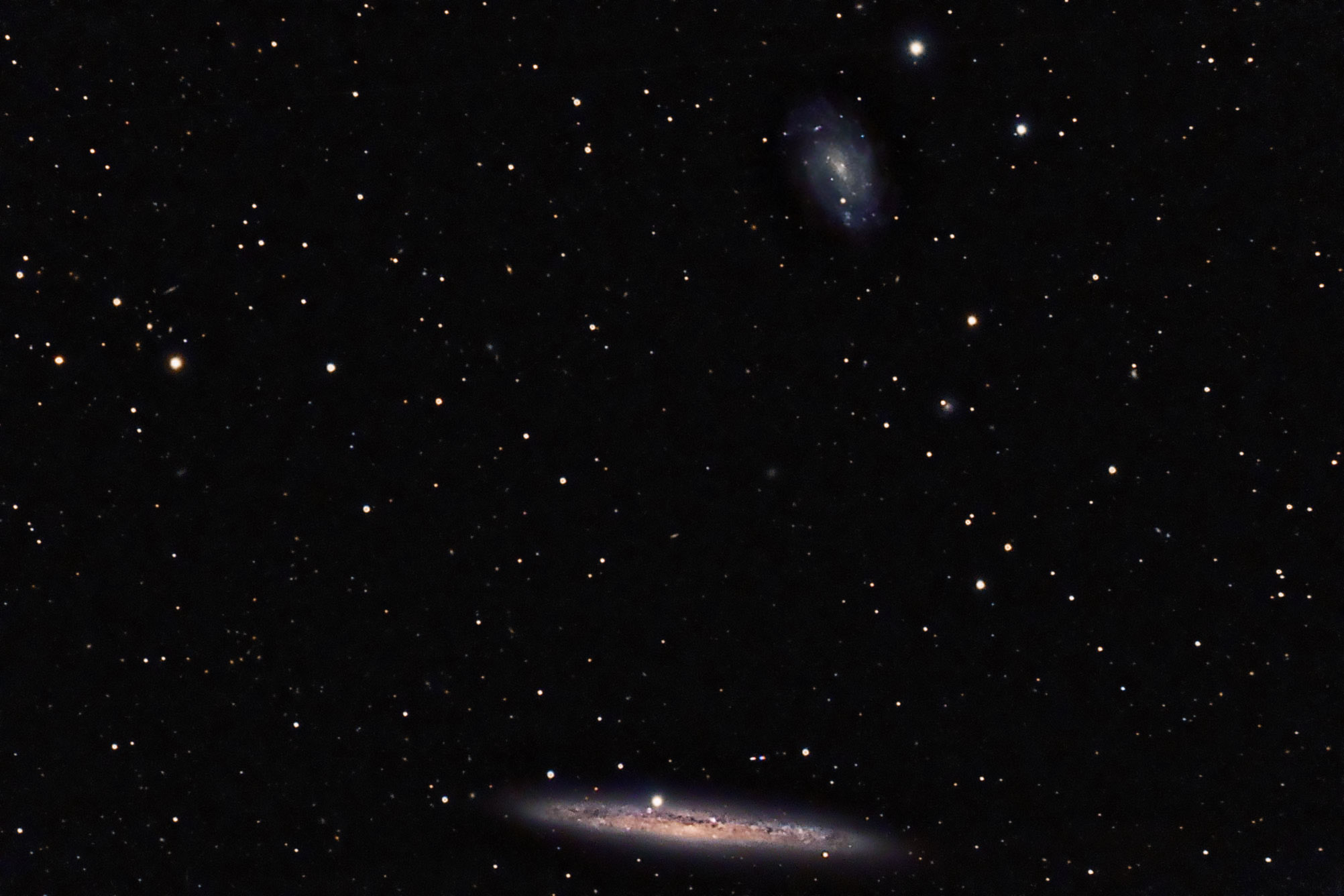| Description | Images |
Object name: NGC4517Designation(s): NGC4517, NGC4517A, NGC 4517 (aka NGC 4437) is a member of the Virgo Cluster and is seen nearly edge-on. It made the NGC list twice due to a plotting error by John Herschel. That is the NGC 4437 listing. Years earlier his dad William Herschel recorded it giving the correct position. That is the NGC 4517 listing I'm using here. It's the one seen nearly edge on at the bottom of my image. The one at the top is NGC 4517A, a small faint barred spiral also in the cluster. Both are about 65 million light-years away. I had better than normal seeing (less distortion from our atmosphere). NGC 4517A at the top is a very faint galaxy. Due to digital processing that compresses 65,000 brightness levels down to the 256 levels a computer monitor can display the brightness of this galaxy appears far brighter in comparison to NGC 4517 than it really is. This field seen with the eye in even a very large scope is dominated by NGC 4517. You have to have good observing skills to even see NGC 4517A as any more than a faint smudge at the limit of visibility. Related Designation(s):2dFGRS N321Z039, 2MASS J12324551+0006548, 2MASX J12324558+0006541, 2MASXi J1232455+000644, 2MFGC 09881, 2PIGG NGPGAL B+3.27210+0.01166, 2XMM J123245.4+000655, 2XMMp J123245.4+000655, AKARI J1232419+000658, APMUKS(BJ) B122954.64+004004.2, ASK 001005.0, CGCG 014-062, CGCG 014-063, CGCG 1229.9+0040, CGCG 1230.2+0024, EON J188.190+00.115, EVCC 0834, EVCC 2159, FGC 1455, GALEXMSC J123228.04+002318.1 , GEMS NGC 4636:[KFB2009] 02, GEMS NGC 4636:[KFB2009] 10, GEMS_N4636_02, GEMS_N4636_10, GNY 001, GNY 007, HIPASS J1232+00a, HIPASS J1232+00b, HIPEQ J1232+00a, HIPEQ J1232+00b, HIR J1232+0007, HIR J1232+0024, IRAS 12301+0023, IRAS F12301+0023, KPG 344A, KPG 344B, LDCE 0904 NED173, LGG 292:[G93] 046, LQAC 188+000 014, MCG +00-32-019, MCG +00-32-020, NGC 4437, NGC 4517, NGC 4517A, NGC4517, NGC4517A, NSA 001498, NSA 141607, NSA 141614, PGC 041578, PGC 041618, RFGC 2315, SDSS J123227.94+002326.2, SDSS J123227.95+002326.4, SDSS J123228.08+002319.3, SDSS J123228.08+002326.4, SDSS J123244.76+000655.1, UGC 07685, UGC 07694, UZC J123228.2+002323, UZC J123245.6+000648, UZC J123245.6+000649, UZC-CG 173 NED01, UZC-CG 173 NED02, UZC-CG 173 NED03, WVFS J1233+0000, WVFS J1233+0030, XMM J123245.4+000655, [BEC2010] HRS 194, [FNO2007] 1159, [FNO2007] 1160, [LG2007] 43, [M98j] 174 NED150, [M98j] 174 NED151, |
